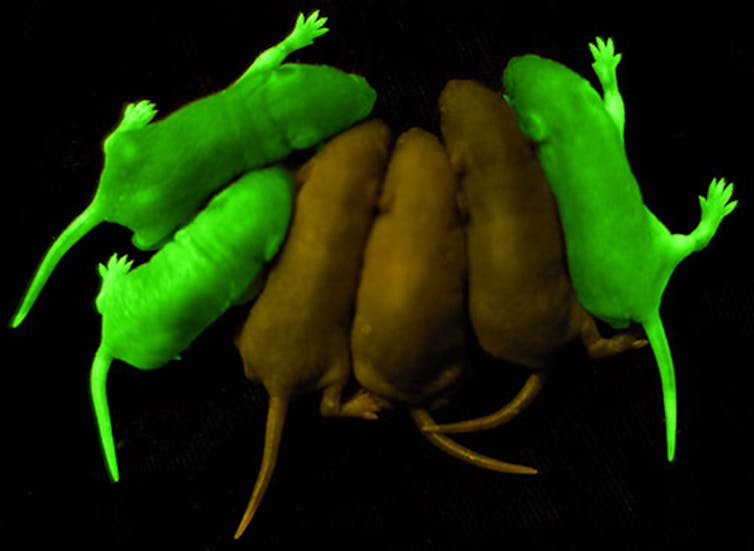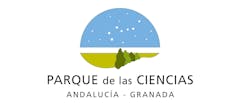Why are transgenic animals created?


This article is part of the section Conversation Junior, in which specialists from leading universities and research centers answer questions from inquisitive young people aged 12 to 16 years. You can send your questions to tcesjunior@theconversation.com
Question from Victoria, 15 years old. IES Jacobo Orellana Garrido. Alameda (Malaga)
This is a great question that deserves a proper answer. But first, we must understand well what a transgenic animal is or, in general, what a transgenic living being is, be it a plant, an animal or a bacterium.
From the first mice to bacteria and transgenic plants
Transgenic organisms are those to which one or more genes from the same or a different species have been added so that they acquire some characteristic that can be useful both to the living creature itself and to research that can be done on it. The newly inserted genetic material is called a transgene, and so we call living things that carry transgenes transgenic organisms or genetically modified organisms (GMOs).
We have known how to create transgenic animals since the late 70s of the last century. First, using viruses capable of introducing their genetic material into the genome of mouse embryos (the first animals used to create transgenes). The scientists subsequently used microinjections to directly introduce the transgene or transgenes they wanted to add into the nucleus of mouse embryos.
The first transgenic bacteria appeared in 1981: coli is capable of producing human insulin after the gene encoding this hormone is introduced into its genome. And soon after that, in 1983, they began to create transgenic plants. They were obtained by using the natural abilities of bacteria called Agrobacterium tumefaciensinfect plant cells and transfer part of their genetic material to them.
Jellyfish gene reveals secrets of blood
Transgenic animals have been used for a variety of scientific applications, be it in biology, biomedicine or biotechnology. As researchers, they help us understand how genes work, develop new treatments, and produce recombinant proteins. The latter are proteins that we can obtain from some organ of the transgenic animal (for example, from the milk produced by the mammary gland) and which can be used for patients who need them.
Perhaps the best way to understand them is through examples like the ones I detail below.
One possibility is to insert the jellyfish gene into the mouse genome. Specifically, the one that belongs to the jellyfish Aquorea Victoria, which lives in the waters of the Pacific Ocean and glows fluorescent green in the dead of night. This glow attracts fish, which, when approached, touches one of its tentacles and is paralyzed, becoming food for the jellyfish.
Shine Aquorea Victoria This is due to the green fluorescent protein encoded in the GFP gene. If we introduce the GFP gene into mouse embryos, fluorescent mice are born, which have proven to be very useful in regenerative medicine experiments or transplantation studies.

Andras Nagy
For example, all the cells in one of these transgenic mice may be green-fluorescent, including the cells in the blood. If we want to study how bone marrow cells are able to regenerate all blood cells (red blood cells, leukocytes or lymphocytes, platelets…), we can use cells from a green transgenic mouse and inject them into the bone marrow of a normal conspecific.
We will then see how these green cells give rise to various blood cells that remain the same color. This way, scientists can study how this new green bone marrow repopulates the traditionally colored mouse.
Without them, vaccines would not be possible.
To develop vaccines against covid-19, caused by the coronavirus SARS-CoV-2, various animal models have been used to test their safety and effectiveness. This corresponds to the preclinical testing that needs to be done before clinical trials can begin in human volunteers.
Rodents, especially mice, are commonly used in the early stages of testing. But in this case, the researchers found that the mice were not naturally infected with the coronavirus because the protein that acts as a gateway for the virus in mice (a receptor on the outer membrane of cells called Ace2) is slightly different from the one we humans have ( ACE2).
To solve this problem, scientists inserted the human ACE2 gene into the mouse genome and created ACE2 transgenic mice that can now be infected with the coronavirus. These animals were a very important tool in creating vaccines that allowed us to control and survive the pandemic.
Transgenic pigs: the future of transplantation?
More and more people need a new organ to replace an existing one that is damaged or not functioning properly. However, not all patients who need it can receive a transplant. Unfortunately, some people die on the waiting list before it is their turn for a transplant.
There are several solutions to solve this problem. First, increase organ donation from people who have just died from other causes. Spain, for example, is a leading country in organ donation and transplantation, and yet there are still many people who do not live to receive a transplant and end up dying.
An alternative solution is to use the organs of other animals similar to us. For example, a pig. The problem is that if we try to implant the heart or kidney of this animal into a human body, our immune system will detect that these cells are not human and reject them. But if we add a few human genes to a pig, creating a transgenic specimen – among other genetic modifications – then we can fool the immune system and its organs will be accepted.
These transplants between different animals are called xenografts, and several pioneering experiments have already been carried out on patients who have survived with hearts, kidneys and even livers from transgenic pigs.

The interactive museum Parque de las Ciencias de Andalucía collaborates with The Conversation Júnior.